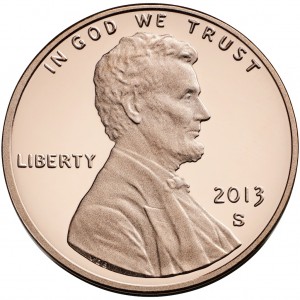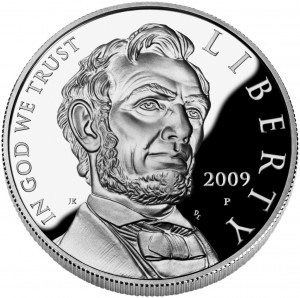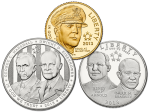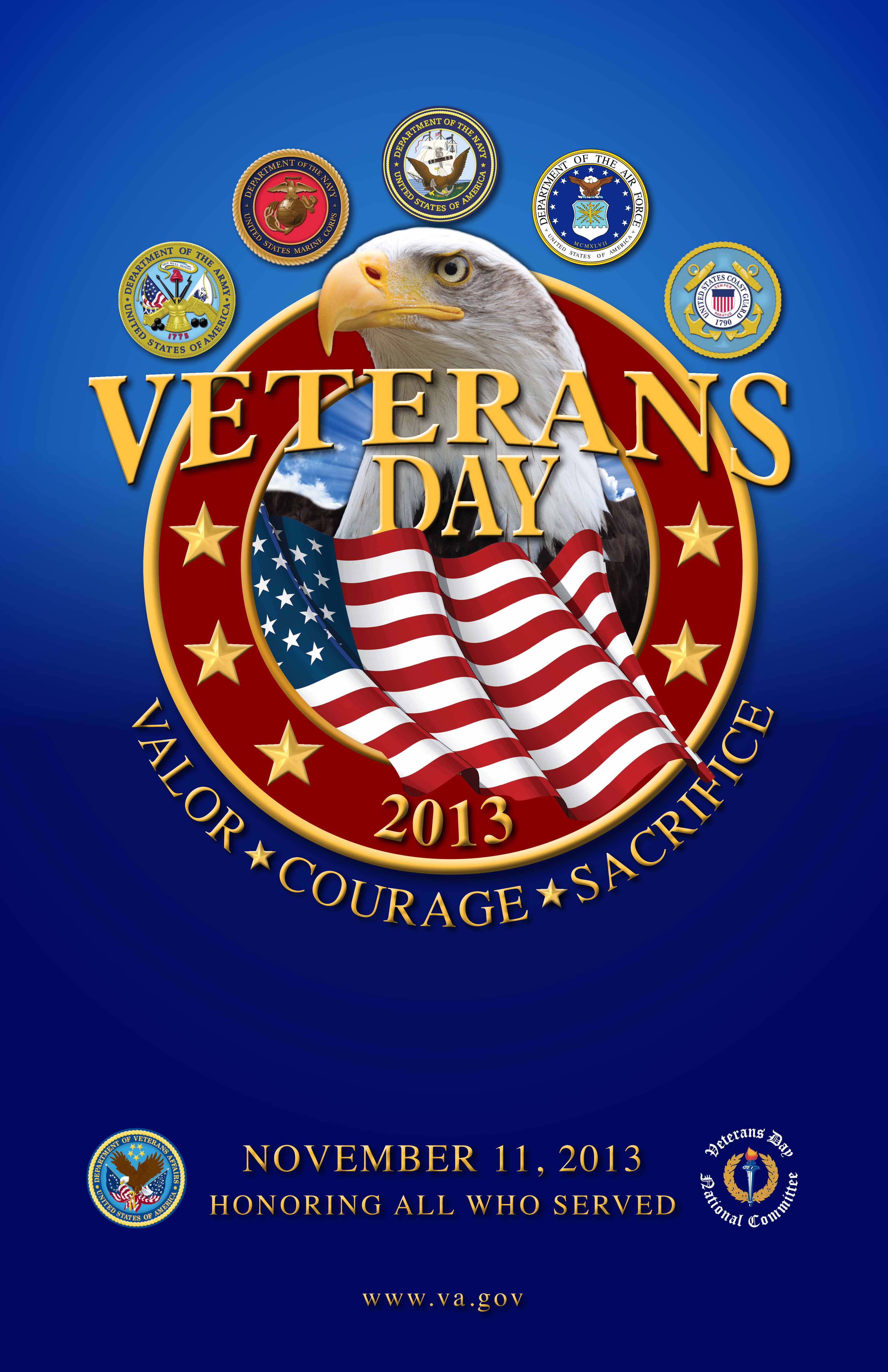Weekly World Numismatic News for November 22, 2020
 This news update is a warning that if you want coin shows and other events to continue, you better start taking COVID-19 more seriously.
This news update is a warning that if you want coin shows and other events to continue, you better start taking COVID-19 more seriously.
I do not care about your politics, who you voted for, or where you live. If you do not take the efforts to stop the spread seriously, there will be few shows in 2021 without relief until 2022.
Sure, vaccines are around the corner, but how long do you think it will take to deliver almost 660 million doses? Think about it: the U.S. Census estimates the population at the end of 2019 at 328.2 million people. If the pharmaceutical companies are saying every vaccine requires a booster within three weeks, that will require the manufacture, delivery, and administration of nearly 660 million doses of the vaccine. You have to wait on long lines to get tested, and that has covered less than 40% of the population.
If you think this is not real because some politician or pundit has said it to you, remember that they do not care about you. They care about their power, money, and an ego trip for the ability to make you do their bidding. The more they control you to do their bidding, the more they gain. They will gain. You will suffer.
Facts are facts. As I type this, the straight facts are that the Johns Hopkins University Coronavirus Resource Center confirms that 58,082,876 have been diagnosed with COVID-19 worldwide. There are 12,085,386 confirmed cases in the United States. That means the U.S. has 20.8% of the world’s coronavirus cases while only having 4.25% of the world’s population. Johns Hopkins is also reporting that there have been 255,823 COVID-19 deaths in the U.S., representing 18.5 percent of global deaths.
Only ONE country in the world has a faster infection rate, and only Sweden, who tried the herd immunity course of action, is having a faster death rate over the last three months than the U.S.
Why am I bringing this up in this forum? I want the shows back. I want to be able to go to Baltimore for the Whitman Show. I want to be able to go to the World’s Fair of Money. But at this rate, it is not going to happen.
The reality is that the National Money Show next March in Phoenix is likely going to be canceled. Arizona is a significant hot spot, and it will not get better before the ANA is forced to make a decision. And with the infection rate in the upper-midwest growing faster than anywhere else in the nation, I would not be surprised to see the World’s Fair of Money canceled or moved from Rosemont.
This week, I returned from the funeral of a second family member that died of COVID-19. One died early during the pandemic when our understanding of the virus was minimal. The most recent one was likely because of an infection at a place that should have known better.
The virus is real. It is not a hoax. It is not a government conspiracy. Nobody will use it against you, and it is not an infringement on any rights to require you to wear a mask for public safety. In fact, it is an infringement on my rights for putting me in danger. It is not a political statement. It’s only a mask!
And now the news…
 → Read more at seekingalpha.com
→ Read more at seekingalpha.com
 → Read more at fxstreet.com
→ Read more at fxstreet.com
 → Read more at indaily.com.au
→ Read more at indaily.com.au
 → Read more at thefirstnews.com
→ Read more at thefirstnews.com
 → Read more at cnn.com
→ Read more at cnn.com
 → Read more at businessinsider.com
→ Read more at businessinsider.com
Want to propose a commem? Be prepared to make sausage
As a comment on my post about the selection design for my 2014 Baseball Hall of Fame Commemorative coin a reader commented with a simple question: Can you offer a suggestion as to who I can approach to offer an idea for a commemorative dollar?

National Baseball Hall of Fame Commemorative was introduced by Rep. Richard Hanna (R-NY) whose district includes Cooperstown, NY
While I cannot fix the fractious nature of congress, I can offer suggestions as to how to get a commemorative coin recognized as a good idea.
As you read this post, let me remind you that former German Chancellor Otto von Bismarck once said, “Laws are like sausages, it is better not to see them being made.” What follows is a look into what it takes to make the sausage in order to propose a commemorative coin and have it become law.
First, rather than starting with congress talk with organizations in the area of interest. After all, commemorative coin programs are fundraising vehicles for the organizations. It helps congress know who will receive the money. In this case, my correspondent wants to see a commemorative coin to be issued in 2017 commemorate the 50th anniversary of the first ever heart transplant.
“My hope is to get more people aware of the need of people to sign up for the donor list to make more organs available,” my correspondent writes. “A donor sign up card could be included with each order. Proceeds could fund awareness program….”
The problem is that this is a good and noble idea but the first question a congress person would ask is what organization would receive the money? Unfortunately, congress is not into creative thinking and would like to know who could receive the money, how the money would be used, and what guarantees that the money earned from the commemorative program would be used for its intended purposes.
Do not expect the representative to do all of the work. In fact, do not expect the congress person to do much of the work until the bill is written and submitted. Even though congress will be in session fewer hours this year than in recent recorded memory, the members will tell you they are too busy to work on this issue. The nature of modern politics is that unless you are going to cut them, the party, their political action committee, or one of their other campaign committees a check, your chance for success is diminished.
However, you can cut through the fog of politics by working with a credible non-profit organization—or a coalition of non-profit organizations—with your interest.
If I wanted to propose a commemorative coin program to honor the first ever heart transplant that would be used to raise money and awareness, I might first talk with the American Heart Association. I would either try to talk with whomever is involved with their legislative affairs office (maybe out of their Greater Washington, DC-area office) or try to contact CEO Nancy Brown and other members of the AHA Board to pitch the idea.When contacting these people, I would have an elevator-speech ready. An elevator speech is one that pitches your idea in the time it would take to ride an elevator. In other words, keep it short and to the point. Make sure your pitch includes something compelling to want them ask for more information and make sure you anticipate any questions.
The nice part about partnering with the AHA is that they are very experienced with legislative affairs. I have no doubt that they either have a full-time lobbyist on staff or have hired a lobbying firm to represent their interests before congress. This is one area where you do not have to answer questions. However you should know a little about commemorative coin bills that congress has considered. These issues are as follows:
Since most commemorative coin bills are additions to the law, they are usually added to Title 31, Section 5112 of the United States Code (31 U.S.C. § 5112). Many times, the bill does not mention where the new law will be inserted when it is introduced. It will be corrected before passage.
If you want to provide the member of congress with the text of a bill, which many times is helpful, you may want to use something that has already been introduced as an example to write your own text. Two good examples are as follows:
- H.R. 2932: United States Coast Guard Commemorative Coin Act
https://www.govtrack.us/congress/bills/113/hr2932 - H.R. 2760: Panama Canal and Pan-Pacific Exhibition Centennial Celebration Act
https://www.govtrack.us/congress/bills/113/hr2760
When visiting the website, look on the right side in the lower half for the link marked “Read Bill Text.”
Both bills specify gold, silver, and clad coins. Your proposal does not have to include all three. In fact, to raise awareness, you might want to consider just a silver dollar and a clad half-dollar.

Too bad there’s so much dysfunction in such a beautiful building.
Once you convince a member of congress to submit the bill and get the member’s support, a professional legislative affairs person would know how to convince other members to sign up as co-sponsors. While having a lot of co-sponsors does not guarantee success, it helps with the bill’s awareness and make it more attractive to pass.
There are other political maneuvers that can be used to have the bill passed, such as convincing a member to bring up the bill under a procedure called “suspension of the rules.” In the House of Representatives, a bill brought to a floor vote under the suspension of the rules are usually non-controversial measures that have no objections—or no objections that would be voiced on the floor. The bill would then pass by unanimous consent or a voice vote.
The procedure is similar in the Senate.
Once the bill passes one chamber, it is sent to the other for it to work on passage.
Since commemorative coin bills are considered “money bills” and the constitution requires all money bills to begin in the House of Representatives, it is likely better for the bill to be submitted to the House first. A companion bill may be submitted to the Senate with the same wording but it is not necessary. The only reason to submit a bill like this in the Senate first is when there is no support in the House and you hope to gain support before the session ends on January 2, 2015.While the bill is in congress it does not mean you have to sit on your hands and wait. One of the best things you can do is to tell your friends, relatives, and anyone else who will listen to call or email their representative to support the bill. If they are not a co-sponsor, tell their staff that they member should be and why. If they are a co-sponsor, thank them for their support and ask if they could get other members signed on as co-sponsors. If you can find people whose representatives are a member of the House Financial Services Committee or the Senate Banking Committee, then they should modify their support by saying to please help get the bill passed through the committee.
If the bill is passed and sent to the other chamber, the work starts again. If the bill is in the Senate, you have to remember it is not called the ’world’s most deliberative body” for nothing. Unless there is an impending disaster or something politically charged, a bill in the Senate would lose a race with the tortoise and a glacier!But that does not mean to stop your efforts. Citizen lobbying efforts in the Senate are doubled because each state has two senators. Make sure you and your supporters contact both of your senators. Remember, it is your right as a citizen to meet with your representatives and this includes senators. You can make an appointment to let your senators know how your feel. If your senator is a member of the Senate Banking Committee, then they should be asked to help move the bill out of committee and to the floor for a vote.
The work is not done until the bill is passed or congress is adjourned for the last time on January 2, 2015. Bills not acted upon when congress adjourns for the last time in the session will be considered to have “died in committee.” If the bill dies in committee, you can do this all over again and try to convince a member of congress to submit the bill in the 114th congress that would open its session at noon on January 3, 2015.
If the bill passes both chambers it is likely it will be signed by the president. As far as I know there has never been a commemorative coin bill to have been vetoed by any president.
Although there are a lot of good ideas, many of them are not properly introduced to congress. The few that do make it do not receive enough support to move beyond introduction. Even fewer are passed by one chamber and not both. Those that make it past congress to the president’s desk had some effort behind them besides being just a good idea. After all, with only two commemorative coin programs allowed per year, congress has to be convinced to believe your commemorative idea is better than another for that same year.
Sausage anyone?
Images of congress and the capitol courtesy of the Architect of the Capitol.
Image from School House Rock’s “I’m Just a Bill” can be found all over the interwebs.
Seven score and a decade ago
Thursday, November 19, 1863, at the dedication of the Soldier’s National Cemetery in Gettysburg, Pennsylvania, following the the two-hour speech by Edward Everett, President Abraham Lincoln gave short, yet profound address:
Now we are engaged in a great civil war, testing whether that nation or any nation so conceived and so dedicated can long endure. We are met on a great battlefield of that war. We have come to dedicate a portion of that field as a final resting-place for those who here gave their lives that that nation might live. It is altogether fitting and proper that we should do this. But in a larger sense, we cannot dedicate, we cannot consecrate, we cannot hallow this ground. The brave men, living and dead who struggled here have consecrated it far above our poor power to add or detract.
The world will little note nor long remember what we say here, but it can never forget what they did here. It is for us the living rather to be dedicated here to the unfinished work which they who fought here have thus far so nobly advanced. It is rather for us to be here dedicated to the great task remaining before us—that from these honored dead we take increased devotion to that cause for which they gave the last full measure of devotion—that we here highly resolve that these dead shall not have died in vain, that this nation under God shall have a new birth of freedom, and that government of the people, by the people, for the people shall not perish from the earth.
Ironically, everyone was not enamored with Lincoln’s brief speech. The Patriot-News of Harrisburg, Pennsylvania did not like the speech. In an editorial published a week after the speech on Tuesday, November 24, 1863, The Patriot-News editorial board added the following paragraph about the ceremony:
On November 14, 2013, almost 150 years later, The Patriot-News published a retraction to their editorial:

Obverse of the 2013-S Lincoln proof cent. Lincoln’s portrait, designed by Victor D. Brenner in 1909, is the longest running design of any United States coin.
Calling All Artists
Not to take anything away from the U.S. Mint’s sculptor and engravers, the infusion of outside talent does help with design as long as the law authorizing the coin does not handcuff the design process by specifying the design or elements of the design. Left to their own creative abilities, the U.S. Mint and AIP artists have produced some very good designs.
Are you an artist? Do you have what it takes to design coins and medals? Remember, this is paid gig with artists receiving $2000-3000 per submission, depending on years active in the AIP program. Those whose designs are selected to be used on a coin or medal will receive an additional $5000. This is money on top of your other work, so you do not have to quit your day job!
Aside from being paid, your initials will appear on all of the coins produced from your designs and your name will be recorded in numismatic history. In years to come, new collectors will open their reference guides and see the name of the artist who designed their coins. While some artists work are sometimes lost to history, this is one way to make your mark on the world by designing a United States coin.
Do you think you have what it takes? Then read the “CALL FOR ARTISTS” release from the NEA. Application deadline is January 10, 2014. Also note that applications will only be accepted at grants.gov. Make sure you read the “How to Prepare and Submit an Application” information.
If you do submit an application, please let me know. I would be interested in tracking your progress and writing about it for everyone to read.
MSNA Inaugurates a new president
The Maryland State Numismatic Association held its annual meeting on Saturday, November 9, 2013 during the Whitman Expo at the Baltimore Convention Center. Following the meeting, the new officers were inaugurated for 2014. Receiving the gavel of the presidency was your favorite coin blogger.
While I would like to say that it was a tough race, I was nominated because I was the previous vice president and elected by a unanimous vote of five people. Truth be told, I forgot to vote! In either case, I accept the honor and trust of the MSNA and hope to expand the organization’s outreach. My first duty will fix the MSNA website that “broke” when my template stopped working properly with the underlining content management system. I hope to fix it by the end of the month.
I do plan to reach out to the member clubs to expand the work of MSNA throughout the state and hopefully grow numismatic participation. We also have a Young Numismatist fund earmarked for a yet to be determined program. If we come up with something good, I will share it with everyone so we can help other numismatic organizations grow.
- 2014 President Scott Barman accepts the MSNA gavel from outgoing president Frank Murphy
- 2014 MSNA Officers (L-R): Secretary Bryce Doxon, President Scott Barman, Vice President Jack Schadegg, and Treasurer Simcha Kuritzky
If you like my tie (click on one of the images to see a larger version) you can buy your own version on Zazzle. Those who have seen me at the last few show have seen the tie. It gets quite a reaction. If you buy the tie, $5 will be added to the MSNA YN fund I spoke about earlier.
11/11/2013
To all that have given the ultimate sacrifice…
To the families of these honored service members…










